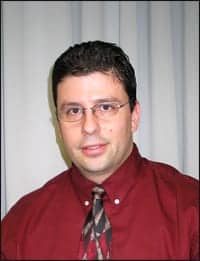 |
The term “accreditation” has received significant attention in the sleep education community lately, yet the complex process of accreditation is often misunderstood. Furthermore, the inappropriate use of the term can mislead students, employers, legislators, and the public about the quality of an organization or a program involved in the education of students preparing to enter the sleep technology workforce. However, demystifying the process of accreditation can lead to an enlightened view of its crucial role in the present and future of sleep medicine.
WHO ARE THE ACCREDITORS?
Accreditation organizations are typically classified under one of four categories: regional, faith-based, private career, and programmatic or specialized. The first three categories are considered institutional accreditors. Regional accreditors operate in six specific clusters of states (regions) in the United States and review close to 3,000 public and private, primarily nonprofit and degree-granting, 2- and 4-year institutions. Faith-based accreditors accredit religiously affiliated and doctrinally based institutions, largely nonprofit and degree-granting. Private career accreditors accredit primarily for-profit, career-based, single-purpose institutions, both degree-granting and non-degree-granting. These include distance learning colleges and universities. Programmatic accreditors accredit specific programs, professions, and free-standing schools, eg, law, medicine, engineering, and allied health professions.1
The Commission on Accreditation of Allied Health Education Professions (CAAHEP) is the largest programmatic accreditor in the health sciences field. In collaboration with its Committees on Accreditation, CAAHEP reviews and accredits nearly 2,000 educational programs in 19 health science occupations.2 The Committee on Accreditation for Respiratory Care (CoARC), the Committee on Accreditation for Education in Electroneurodiagnostic Technology (CoA-END), and the Committee on Accreditation of Education for Polysomnographic Technology (CoA-PSG) are the three committees responsible for recommending accreditation of sleep technology programs to CAAHEP. Each of these three CoAs has several sponsoring organizations. The sponsoring organizations for the CoA-PSG, for example, are the American Academy of Sleep Medicine (AASM), American Association of Sleep Technologists (AAST), and the Board of Registered Polysomnographic Technologists (BRPT). Sponsoring organizations each appoint one or more members from their organization to serve on the board of directors of the CoA.
WHO “ACCREDITS” THE ACCREDITORS?
Two entities are responsible for periodically reviewing the overall quality and effectiveness of accrediting organizations, a process referred to as “recognition.” The Council for Higher Education Accreditation (CHEA) is a voluntary, private institutional membership organization that evaluates whether accrediting organizations meet six specific academic quality assurance and improvement standards established by CHEA. These include academic quality, accountability, self-scrutiny, fair practices, ongoing review, and sufficient resources. CHEA is the largest institutional higher education membership organization in the United States, with approximately 3,000 degree-granting colleges and universities and 60 recognized institutional and programmatic accrediting organizations. CHEA accreditors are typically reviewed on a 10-year cycle with two interim reports.3
|
Stay current on accreditation issues. Subscribe to Sleep Report.
|
The other agency is the US Department of Education (USDE). USDE recognition is required for accreditors whose institutions or programs seek eligibility for federal student aid funds. USDE standards include student achievement, curricula, faculty, facilities (including equipment and supplies), fiscal and administrative capacity, student support services, recruiting and admissions practices, measures of the degree and objectives of degrees or credentials offered, records of student complaints, and records of compliance with program responsibilities for student aid. USDE recognition review normally takes place every 5 years. USDE recommends to the National Advisory Committee on Institutional Quality and Integrity (NACIQI), an appointed group of educators and public members, to recognize or not recognize an accrediting organization. The committee, in turn, recommends action to the US Secretary of Education.3
ESSENTIAL COMPONENTS OF THE ACCREDITATION PROCESS
The CoA-PSG, CoARC, and CoA-END each have similar processes for initiating accreditation requests, reviewing ongoing accreditation statuses, and recommending withdrawals of accreditation. In addition, there are a number of common elements between each of the CoAs’ accreditation standards.
Programs requesting initial accreditation or a change in accreditation status are typically assigned a referee who acts as a liaison and advocate for the program as the program moves through the accreditation process. The referee makes recommendations to the CoA concerning the accreditation status of the program. The referee is also responsible for analyzing program documents for compliance with the accreditation standards established by the CoA.
Programs from each of the three CoAs seeking initial accreditation or periodic review typically prepare and submit a self-study. A self-study is a comprehensive, written programmatic assessment and analysis of how well a program meets the standards of the accrediting organization. The referee is a key consultant in helping the program to complete the self-study process. The referee and other CoA members review the self-study after it is completed.
Once the self-study is acceptable, a site visit is scheduled. Higher education faculty and administrators with considerable experience and training comprise the site visit team, which is responsible for visiting a program to gather evidence that determines the extent to which the self-study reflects the actual status of the program. This peer review method is a critical component of the accreditation process as it not only provides invaluable information and feedback to the program, but also establishes a measure of external validity to the program by means of using unbiased third-party evaluators.
Information from the self-study analysis, the site visit report, and other information including, but not limited to, outcomes metrics (described below) are used by the full CoA Board to formulate a decision on the accreditation status of that program. This recommendation is then forwarded by the Board to the CAAHEP, which makes the final accreditation decision.3
Another critical component of the accreditation process is the establishment of program and curricular standards that will become the minimum measures of quality in programs that prepare students to work in sleep laboratories. In order for programs to successfully meet accreditation standards, the instructional units, including curriculum content and length, and documentation of student progress must be designed to enable achievement of program goals and objectives.
Resource assessment is yet another vital component of accredited programs, the results of which form the basis for ongoing planning and quality improvement. Accredited programs must periodically evaluate the degree to which both material and personnel resources adequately fulfill the needs of the program. Learning and clinical resources must be regularly assessed to ensure that they are appropriate to the program’s goals as well as available to students outside of regular classroom hours. Accredited programs also must ensure that physician input and interaction with the students are adequate. In addition, there must be a reliable and carefully designed evaluation system that meets the objectives of the curriculum.
As CAAHEP has placed an increasing emphasis on the importance of “outcomes-based accreditation,” programs must periodically assess their effectiveness in achieving programmatic goals by monitoring and reporting outcomes using a set of metrics established by the CoA. Outcomes metrics include, but are not limited to: national credentialing examination performance, programmatic retention/attrition, graduate satisfaction, employer satisfaction, job placement, and programmatic summative measures. To remain in good standing, an accredited program must meet the outcomes assessment thresholds established by the CoA.
CURRENT STATUS OF ACCREDITED SLEEP PROGRAMS
With the exception of nine electroneurodiagnostic programs offering add-on tracks in polysomnography, efforts to accredit sleep training programs to meet the emergent need of skilled technologists have lagged behind the explosive growth in sleep laboratories and the escalating need for trained personnel. Currently, there are 10 CoARC programs that offer add-on polysomnography tracks and seven accredited programs with the CoA-PSG. Overall, there are 26 accredited programs in 16 states. The complex and often daunting tasks of curriculum development as well as the lengthy accreditation process itself may be partly to blame for the low numbers. Anecdotal evidence also suggests that there is a dearth of qualified and experienced faculty to provide the didactic and laboratory instruction in a higher education institutional setting. Many experienced sleep technologists lack the educational credentials required of higher education faculty. I have personally heard of a number of communities that have the collective interest to establish an accredited program, yet lack the personnel to teach it. It is likely that there are also instances where qualified and experienced instructors are available, but no sponsoring educational institution is willing to commit the considerable resources necessary to establish an accredited program. Nevertheless, as more programs attain accreditation, the knowledge base for developing such programs will undoubtedly increase, thereby facilitating the creation of more programs.
THE FUTURE OF ACCREDITED SLEEP PROGRAMS
Albeit at a slower than expected pace, accredited sleep programs will begin to proliferate as more resources are invested by the professions that consider establishing accredited programs a priority. One effective strategy to facilitate this proliferation is policy change given that the higher education setting is characteristically slow to adapt, and the process for creating new programs or majors often takes years. One such policy likely to have a profound impact on accredited programs was recently announced by the AASM. Beginning in 2012, the completion of a CAAHEP-accredited sleep technology program will be required for all RPSGT exam candidates (www.aasmnet.org). While this policy change is laudable and some might even describe it as visionary, its implementation will likely create a void in registry-eligible technologists post 2012, as it is improbable that there will be an accredited sleep program in every state within the next 5 years. To meet the growing demands for highly educated sleep professionals, current technologists with experience but lacking degree requirements need to turn to the higher education system to obtain those degrees. Those few individuals possessing both experience and the required degrees must make establishing a CAAHEP-accredited sleep program an urgent priority.
Accreditation is about maintaining and improving the academic quality of sleep programs. Although accreditation raises the standards and quality of the educational arm of any profession, it requires enormous resources to initiate and maintain. However, with increasing collaborative efforts between postsecondary educational institutions and the sleep community, the number of newly accredited sleep programs is expected to continue to increase. Accreditation is a self-evaluative process based on nationally accepted standards, peer review, and evaluation of outcomes measures. The accreditation process helps both prospective students and the public identify which programs and institutions meet (or do not meet) these rigorous academic standards.
Recognition as a CAAHEP-accredited sleep program elevates the profession and provides value-added education to future health care professionals. Accreditation ensures that programs of study for sleep technology—and institutions that offer those programs—meet established standards for academic quality and ensure accountability and transparency in their operations.
Tom Smalling, PhD, RRT, RPFT, RPSGT, FAARC, is clinical associate professor of health sciences in the School of Health Technology and Management at Stony Brook University, Stony Brook, NY. He also serves on the Board of Directors of CoARC. He can be reached at .
REFERENCES
- www.caahep.org. Accessed June 29, 2007.
- Eaton J. An Overview of US Accreditation. Washington, DC: Council for Higher Education Accreditation; 2006:12.
- Fact sheet #5. Accrediting Organizations in the United States: How Do They Operate to Assure Quality? Washington, DC: Council for Higher Education Accreditation; 2006.





